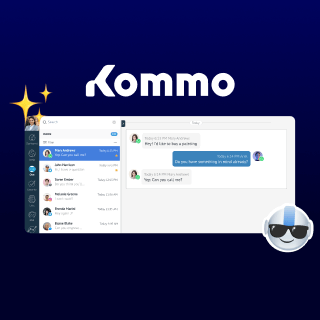WebHooks
In this section we will describe all available methods for working with Webhooks via API.
You can read more about the webhooks format here
Table of Contents
Common information
- The number of webhooks on one account is limited to 100
- One webhook can be associated with several events
List of webhooks
Method
GET /api/v4/webhooks
Description
This method allows to get a list of webhooks on the account.
Limitations
Method is available for administrator users only.
GET parameters
| Parameter | Data type | Description |
|---|---|---|
| filter | object | Filter |
| filter[destination] | string | Filter by the webhook URL |
Data type header when the request is successful
Content-Type: application/hal+json
Data type header in case of an error
Content-Type: application/problem+json
HTTP response codes.
| Response code | Case |
|---|---|
| 200 | Request successful |
| 401 | User is not authorized |
Response parameters
Method returns a collection of webhook models. The properties of the model are listed below
| Parameter | Data type | Description |
|---|---|---|
| id | int | Webhook ID |
| created_by | int | ID of the user who created the webhook |
| created_at | int | Webhook creation date in the format of Unix Timestamp |
| updated_at | int | Webhook edit date in the format of Unix Timestamp |
| sort | int | Webhook sorting |
| disabled | bool | Defines whether webhook is disabled |
| destination | string | Valid URL where you want to receive a notification |
| settings | array | Webhook trigger events. You’ll find a list of available events here |
Response example
{
"_total_items": 2,
"_embedded": {
"webhooks": [
{
"id": 839656,
"destination": "https://webhook-uri.com",
"created_at": 1575539157,
"updated_at": 1575539157,
"account_id": 321321,
"created_by": 123123,
"sort": 1,
"disabled": false,
"settings": [
"add_task"
]
},
{
"id": 849193,
"destination": "https://api.test.com/amoWebHook",
"created_at": 1576157524,
"updated_at": 1585816857,
"account_id": 321321,
"created_by": 123123,
"sort": 2,
"disabled": true,
"settings": [
"update_lead"
]
}
]
}
}
Adding webhooks
Method
POST /api/v4/webhooks
Description
This method allows to create a webhook to receive event notifications to the specified URL.
Limitations
Method is available for administrator users only.
Request header
Content-Type: application/json
Request parameters
To create a webhook, “destination” and “settings” parameters should be passed. If a webhook with the passed destination already exists, it will be updated corresponding to the passed settings.
| Parameter | Data type | Description |
|---|---|---|
| destination | string | Valid URL where you want to receive a notification |
| settings | array | Webhook trigger events. Passed as an array of events. You’ll find a list of available events here |
An example of the request
{
"destination": "https://example.test",
"settings": [
"add_lead"
],
"sort": 10
}
Data type header when the request is successful
Content-Type: application/hal+json
Data type header in case of an error
Content-Type: application/problem+json
HTTP response codes.
| Response code | Case |
|---|---|
| 200 | Webhook added successfully |
| 422 | Request can not be processed. Details are available in the request response |
| 401 | User is not authorized |
| 400 | Invalid data given. Details are available in the request response |
Response parameters
Method returns the added webhook model. The properties of the model are similar to the model returned in the Webhooks List request responce.
Response example
{
"id": 1056949,
"destination": "https://example.test",
"created_at": 1589012268,
"updated_at": 1589012268,
"account_id": 321321,
"created_by": 3944275,
"sort": 1,
"disabled": false,
"settings": [
"add_lead"
]
}
Deleting a webhook
Method
DELETE /api/v4/webhooks
Description
This method allows to delete a webhook.
Limitations
Method is available for administrator users only.
Request header
Content-Type: application/json
HTTP response codes.
| Response code | Case |
|---|---|
| 204 | Webhook has been deleted successfully |
| 404 | Webhook is not found |
| 403 | Insufficient rights to call this method |
| 401 | User is not authorized |
| 400 | Invalid data given. Details are available in the request response |
Response parameters
Method does not return a body
Webhook events
| Event | Description |
|---|---|
| responsible_lead | Lead responsible user changed |
| responsible_contact | Contact responsible user changed |
| responsible_company | Company responsible user changed |
| responsible_customer | Customer responsible user changed |
| responsible_task | Task responsible user changed |
| restore_lead | Deleted lead restored |
| restore_contact | Deleted contact restored |
| restore_company | Deleted company restored |
| add_lead | Lead added |
| add_contact | Contact added |
| add_company | Company added |
| add_customer | Customer added |
| add_task | Task added |
| update_lead | Lead updated |
| update_contact | Contact updated |
| update_company | Company updated |
| update_customer | Customer updated |
| update_task | Task updated |
| delete_lead | Lead deleted |
| delete_contact | Contact deleted |
| delete_company | Company deleted |
| delete_customer | Customer deleted |
| delete_task | Task deleted |
| status_lead | Lead status changed |
| note_lead | Note added to lead |
| note_contact | Note added to contact |
| note_company | Note added to company |
| note_customer | Note added to customer |


